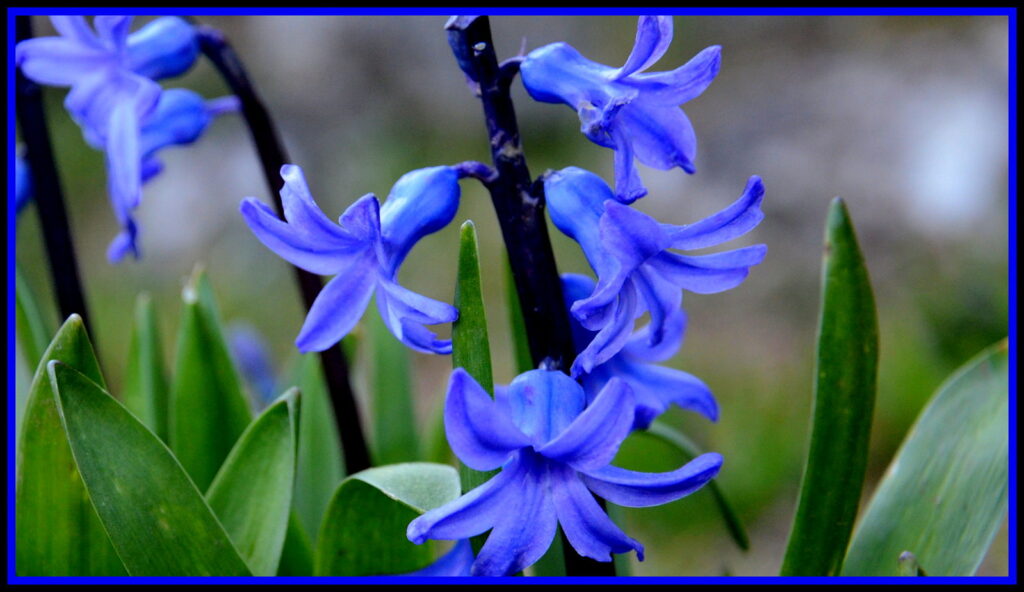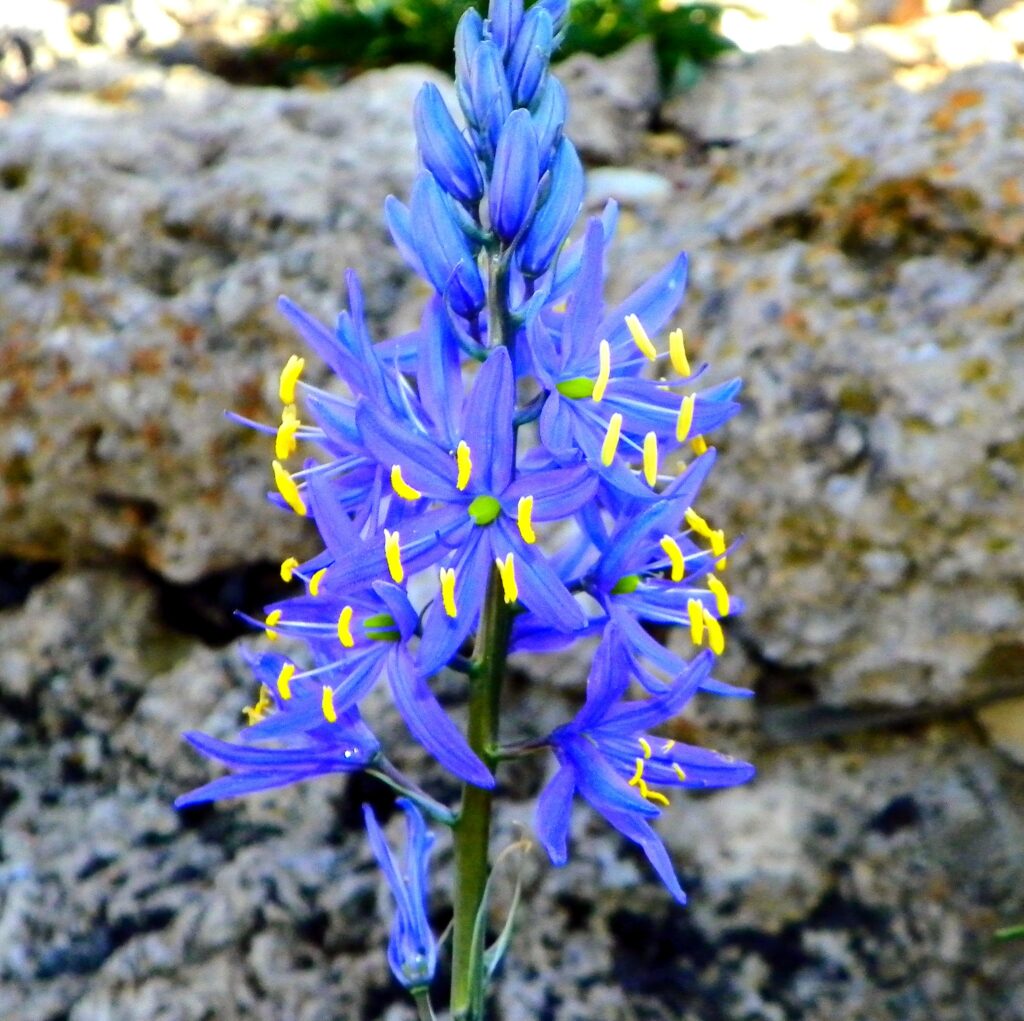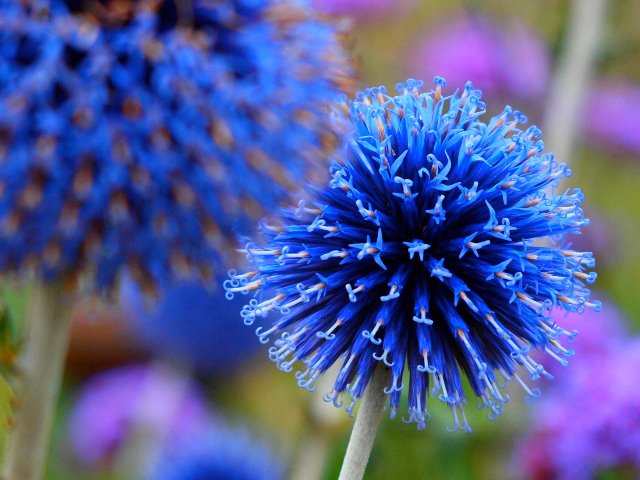The color of a flower can impact the overall atmosphere and appearance of a garden, balcony, or courtyard.

While not everyone is bothered about sticking to a specific color theme, sometimes what your garden might be lacking is slightly more unique flower color.
Blue is one of the most uncommon flower colors. While the natural world can produce blue flowers without hybridization, trying to find true blue flowers can be tricky.
Sure, you can opt for a pale blue phlox species, but why not push the boat out and find a flower that matches the bright blue sky?
Whether you’re looking for a standout flower in your garden or if you simply want to expand your knowledge of flowers, here is our guide to 18 true blue flowers!
Cambridge Blue Salvia (Salvia Patens ‘Cambridge Blue’)
There are several types of blue salvias, with the Cambridge blue salvia variety offering blooms similar to a bright, spring day.

The Cambridge blue salvia features hooded flowers in a vibrant pale blue color, a color which is enhanced by the fresh greenery around it.
These flowers are best planted in sunny but sheltered spots, such as at the border of a flower bed.
Like all salvias, the Cambridge blue salvia is known to attract pollinating wildlife thanks to its bright coloring and pleasant fragrance.
Commelina Tuberosa
Part of the dayflower family, the commelina tuberosa is grown as an ornamental plant across the world. These fast-growing perennials bloom fantastic vivid true blue petals in the late summer and beginning of fall.

When grown in the wild, it naturally occurs in sunny yet shaded areas such as open forests and moist fields.
Commelina tuberosas look particularly good at the front of a flower bed border, especially when planted next to yellow flowers.
Common Bluebell (Hyacinthoides Non-Scripta)
Also known as the English bluebell, the common bluebell is typically associated with the start of spring.

These beautiful flowers produce bell-shaped true blue blooms that cover the floors of woodland areas like a blanket, but they are also popularly planted as garden flowers.
While bluebells were introduced to North America, the species is actually considered highly invasive in certain areas. The flower’s ability to spread quickly means that they will need to be maintained in a garden.
Cornflower (Centaurea Cyanus)
The Europe-native cornflower is widely known for its powerful true blue flowers, which is due to a pigment called protocyanin.

This pigment is also responsible for the red in roses. While native to Europe, the cornflower species has been naturalized in North America and Australia as a statement ornamental flower.
As the cornflower used to be considered a weed in its native cornfield habitats, it is now considered an endangered species in Europe.
Lobelia Erinus
Also known as the trailing lobelia or the garden lobelia, Lobelia erinus is a species belonging to the bellflower family.

While native across southern Africa, lobelia erinus is commonly grown worldwide as a garden flower – particularly in hanging baskets thanks to its fast-growing and trailing structure.
Not only does the color add some bright variation to a garden, but the unique shape of the flower provides a garden with something out of the ordinary.
Camassia Quamash
Also known as common quamash, camas, or simply quamash, the camassia quamash is a flowering herb native across western North America.

These flowers grow up to 35 inches tall, producing a raceme of star-shaped flowers that vary in vibrancy – some flowers are pale blue, some are true blue, while others are significantly darker.
The camassia quamash also features yellow sepals and stamens, which helps to bring out the true blue color.
Morning Glory
Morning glory is the name used to refer to lots of species and genera, all of which are known to uncurl into a full bloom each morning.

While most of these species are white, there are some blue varieties that appear pale blue or true blue.
The ipomoea tricolor ‘Heavenly blue’, for example, is a beautiful South American morning glory species that features true blue flowers with a hint of violet.
Polemonium Caeruleum
Also known as Greek valerian or Jacob’s-ladder, polemonium caeruleum is a temperate European native perennial flowering plant.

This flower produces clusters of lavender-blue flowers with contrasting orange stamens.
They are remarkably hardy flowers that grow in an array of natural habitats, making them suitable for growth in hanging baskets, flower borders, and rock gardens.
Blue Daze (Evolvulus)
While part of the morning glory family, blue daze isn’t actually a climbing vine. Blue daze produces a low-growing mound of tall clusters of true blue flowers.

As with morning glory species, blue daze flowers close at night and open into full bloom in the morning.
The flower also has silver-green foliage, creating a delicate contrast with the colorful blooms that make the blue shade stand out even more.
Aurora Blue Delphinium (Delphinium ‘Aurora Blue’)
Delphiniums are a popular flower in most gardens, but the aurora blue variety is a particular standout.

These tall flowers produce vivid true blue flowers surrounding the top of the stem, before trailing down into a mass of green foliage.
The flowers each possess a fluffy white stamen that creates a stark contrast to the blue.
Thanks to their eye-catching appearance and high pollen content, aurora blue delphiniums are brilliant for attracting pollinating wildlife to the garden.
Blue Sage (Salvia Azurea)
If you’re looking to add a bit of colorful height to your garden, check out the blue sage.

Also known as the prairie sage or azure sage, blue sage is an upright flower that produces true blue blooms, contrasting beautifully with the silver-green foliage surrounding them.
These flowers are great for growing towards the back of a flower bed to provide some height.
Interestingly, blue sage is a good option to grow in coastal areas thanks to its tolerance to salty wind and chalky soil.
True-Blue Hydrangea
As the name suggests, the true-blue hydrangea is a hydrangea that produces blooms of true blue flowers.

Hydrangeas are one of the most beloved and popular gardening flowers, as the true-blue variety provides a beautiful addition to any garden.
Not only does the true-blue variety look fabulous (especially when matching a clear blue sky), but the large clusters help to attract pollinating wildlife to the garden.
Taplow Blue (Echinops Bannaticus)
Also known as the globe thistle, the taplow blue is a unique way to add some architectural and structural variety to your flower bed borders.

These plants bloom blue spherical flowers with lighter blue tiny petals that appear like thorny spikes. The overall color might not always be true blue, as the petals can make the flower appear stormy blue or a frosted blue.
What’s more, these flowers boast remarkably low-maintenance care requirements.
Himalayan Crane’s-Bill (Geranium Himalayense)
Also known as the lilac cranesbill, the Himalayan crane’s-bill is an easy-growing and hardy flowering species native to parts of Russia, China, and the Himalayas.

These flowers boast true blue blooms that often look lavender-blue, as the purple hue is enhanced by the reddish and white center.
These flowers have a sprawling habit. Making them suitable for growth along the border of a flowering bed or in a hanging basket.
Lily Of The Nile (Agapanthus)
Despite its common name, the lily of the Nile isn’t a true lily. Instead, this flower produces compacted globe-shaped flowers of blue blooms that can range in vibrancy and shade.

If you’re lucky, you might be able to find a flower that resembles the true blue color! These popular flowers are most commonly grown in abundance in Northern California.
Gentia
Gentia is a genus of approximately 400 species. All of which exhibit a similar appearance of an intense true blue or royal blue trumpet-shaped flower.

As a cosmopolitan genus, the species within the genus have the ability to grow naturally or be introduced into virtually any habitat. Making them suitable flowers for gardens across the world.
Bluebeard (Caryopteris X Clandonensis)
Bluebeard is a compact shrub hybrid that produces an abundance of true blue clusters of flowers that bloom all the way through to late fall.

The blue color is enhanced by the soft silver-green foliage. And the compact structure means the flower can be easily grown in a pot or as a shrub border.
Plus, the flower’s blue coloring is eye-catching and works to attract pollinating wildlife.
Spike Speedwell (Veronica Spicata)
This species of flowering plant often comes in a variety of colors. But the dark blue variety is a particular standout.

Spike speedwells consist of 1-foot tall spikes that provide a nice height difference to a flower bed. Not to mention the vivid blue flowers clustered towards the top of the spike. These flowers are also brilliant for attracting pollinators.
Conclusion
While true blue flowers might be an uncommon color in the flower world. It doesn’t mean there are no species of true blue flowers out there.
Gardeners just might have to take some creative liberties to make light blue or dark blue flowers appear more true blue with strategic planting!
We hope you learned something from this article, here are other articles that you can learn from:
25 Delightful Nigerian Flowers (With Pictures)







